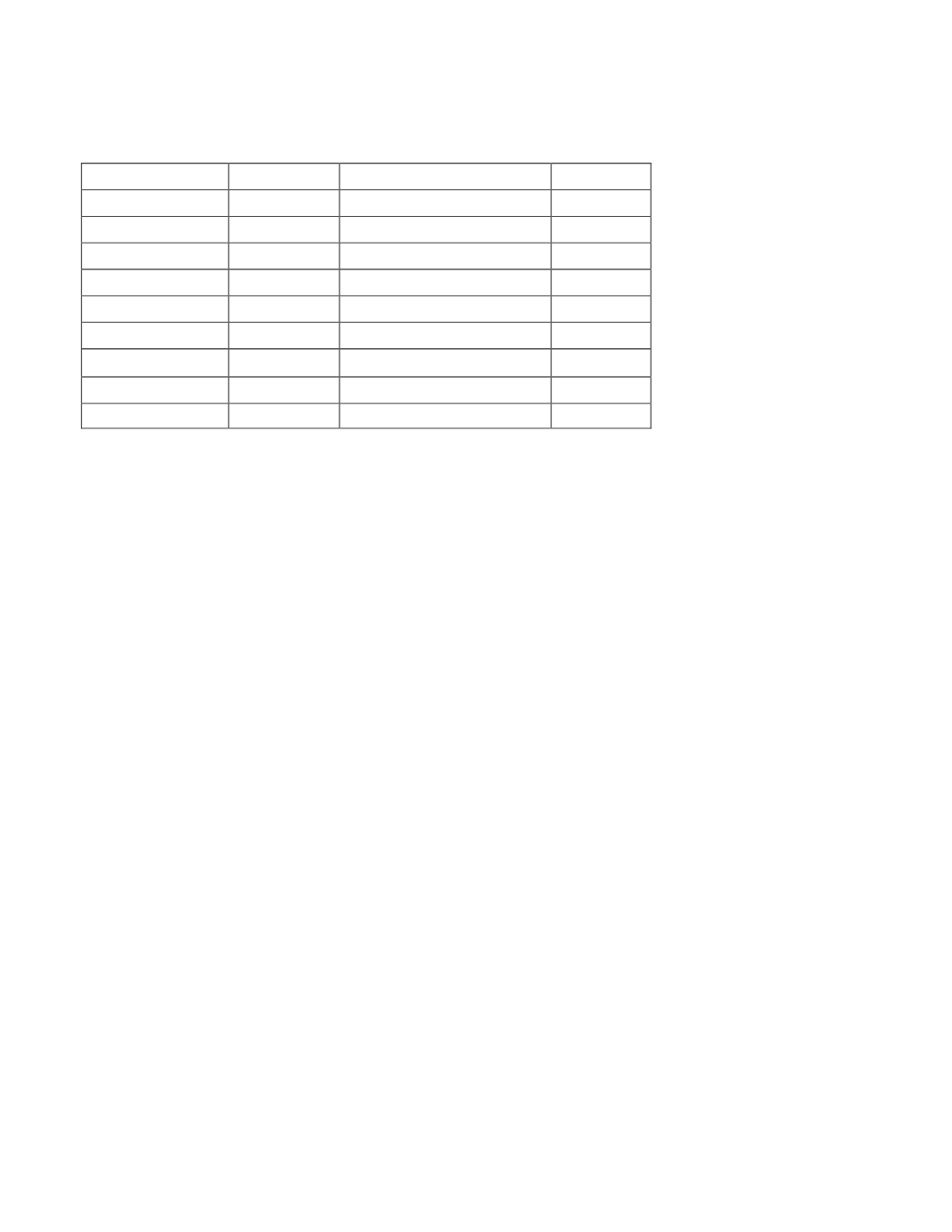

Ref. No. [UMCES] CBL 2016-010
ACT VS16-01
26
Table 5.
Summary of regression statistics for the AroUSB versus reference sample response curves for each of
the nine laboratory trials.
Test ID
R2
y Intercept
Slope
LT15S00*
0.996
-0.567
1.094
LT15S10
0.998
-0.159
0.980
LT15S35*
1.000
-0.203
1.036
LT04S00
0.999
-0.257
1.062
LT04S10
1.000
-0.173
1.038
LT04S35
1.000
-0.163
1.039
LT30S00
1.000
-0.151
1.054
LT30S10
0.995
-0.437
1.121
LT30S35
1.000
-0.105
1.065
* Bubble contamination data excluded.
Results of the 56 day long-term stability and thermal stress challenge for the AroUSB are
shown in figure K. The instrument was maintained in a well circulated tank and oxygen content
manipulated by alternately varying water temperature set point between 15 and 25
o
C several times per
week of deployment. The data completion result for the stability test was 100%. The time series of
instrument readings at 15 min intervals is plotted against discrete values for Winkler reference samples
(
top panel
) along with the time series of the difference between instrument and reference
measurements (
bottom panel
). The overall mean difference between measurements was 0.001 (s.d. =
0.326) mg/L. There was no significant trend in accuracy over time (slope = -0.0007 mg/L/d) that
would indicate any type of performance drift over the duration.
Results for the functional sensor response time assessment of the AroUSB are shown in figure
L. The top panel depicts the time series of 10s instrument reads during transfers between adjacent high
(9.6 mg/L) and low (2.0 mg/L) DO water baths, maintained commonly at 15
o
C. The bottom panel
(
lower left
) depicts results fit with a 3 parameter exponential decay function: DO
rel
= DO
relMin
+ a
e
-bt
and indicated τ calculated from fit. Data for low DO to high DO transitions (
lower right
) were treated
similarly but normalized to steady state value in subsequent high DO tank and subsequently fit with an
analogous 3 parameter exponential rise function: DO
rel
= DO
relMin
+ a(1-
e
-bt
) with indicated τ being
directly calculated from fit. The calculated τ
90
was 11.8 s during high to low transitions and 7.1 s for
low to high transitions covering a DO range of approximately 8 mg/L at a constant 15
o
C. However,
the AroUSB was incorrectly programmed for a sampling rate of 10 seconds instead of its highest
frequency of 1 s. We caution the reader that the sampling rate would have a direct impact on the
calculated response rate as noted within the manufacturer’s response.
















